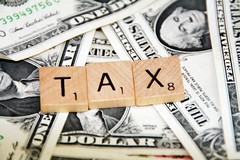The Alliance of Institutional Investors, a coalition of the world’s largest investors have called on governments to focus on climate change and to strongly support investments in clean energy. This group stated in an open letter that “rapidly growing greenhouse gas emissions and more extreme weather were increasing investment risks globally”.
The alliance’s call for governments to address the issue of climate change more aggressively precedes the start of the United Nations climate talks in Doha, Qatar where approximately 200 countries will convene with the goal of extending the Kyoto Protocol, which is the existing plan adopted by developed nations to curb greenhouse gas emissions and is slated to expire at the end of this year.
The alliance notes that governments can effectively address climate change and cleaner energy by adopting the proper policies that would make investment in clean and efficient energy attractive to institutional investors. It also voiced the urgent need to issue “strong carbon-reducing policies”. The letter came with a dire warning that failure on the part of governments to act to address climate change with its warming trends would result in extreme weather occurrences becoming more typical and costly as recently witnessed with Hurricane Sandy.
Hopefully, the United Nations climate talks scheduled for 11/26 through 12/7 will be productive and will result in the establishment of global collaborative policies and plans to aggressively attack the problems of climate change. With the support of institute investors, governments can expect to make huge gains in the fight to curb greenhouse gas emissions and create cleaner energy efficiently so that we all can live green, be green.
Source for this article:
http://www.huffingtonpost.com/2012/11/20/investors-climate-change_n_2162767.html?utm_hp_ref=green








